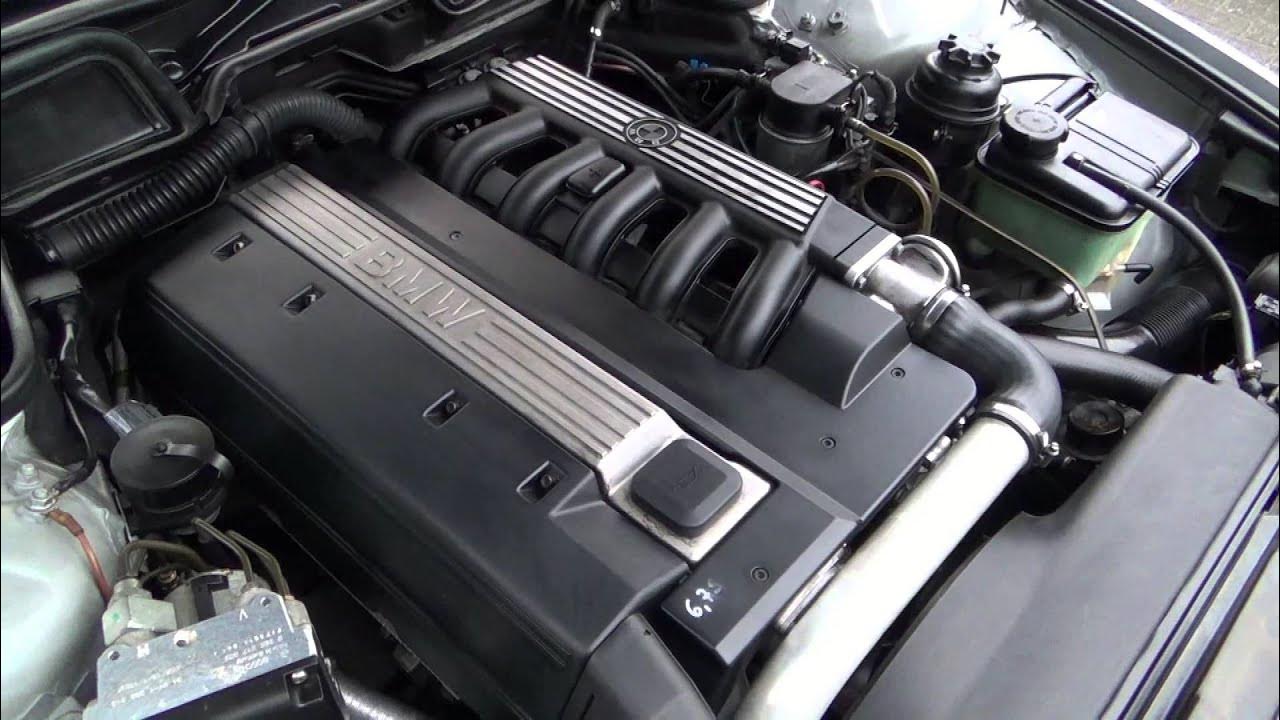The E38 725tds

Engine Specs
The engine that powered the BMW E38 725tds was a 2.5-liter inline-six (I6) turbodiesel, identified as the M51D25. This engine was a single overhead camshaft (SOHC) design with 12 valves, featuring indirect fuel injection, which was common in diesel engines of that era. It was paired with a turbocharger to increase power output while maintaining impressive fuel economy, making it quite good for long-distance cruising while also offering considerably lower running costs than its gasoline counterparts.
Performance
The M51 engine in the 725tds only delivered 143 horsepower (105 kW) at 4,400 rpm and 260 Nm of torque (191 lb-ft) at 2,200 rpm. While this power output may not seem particularly high by modern standards or compared to the more capable engines in the E38 range, the 725tds compensated with its generous torque, especially at lower rpm. This made it particularly good for relaxed, effortless cruising, especially at highway speeds, and provided adequate acceleration for everyday driving.
- Power Output: 143 hp (105 kW) at 4,400 rpm
- Torque: 260 Nm (191 lb-ft) at 2,200 rpm
- 0-100 km/h (0-62 mph) Acceleration: 12 seconds
- Top Speed: 205 km/h (127 mph)
The engine's power delivery was smooth and linear, typical of inline-six diesels, and it provided just enough low-end torque to make cruising and city driving relatively easy. The torque curve peaked early, making it quite confortable for daily city-driving, but the lack of horsepower will often give you a hard time overtaking other vehicles at higher speeds.
As you have probably noticed by now, by no means this was a perfomance-oriented engine. Should you need more power while still enjoying good fuel consumption, consider looking for later developed diesel powertrains, namely the 730d variant (3.0L I6 turbo diesel - 184/193hp) and also the 740d version (4.0L V8 biturbo diesel - 248hp).
E38 725tds owners ofter reported injection pump failure, mostly due to the hydraulic head going bad. This is a well established weak spot of this engine, widely covered on dedicated E38 groups. Best advice is to do a preventive replacement or at least to conduct inspection periodically. If serviced and maintained accordingly, the M51 will do its job even after reaching half a million kilometers.
725tds Sound
725tds Acceleration
Fuel Consumption - main "feature" of the M51
One of the main advantages of the M51 diesel engine in the BMW 725tds was its fuel efficiency, which was a key selling point for this model. The combination of a diesel engine and turbocharging allowed the 725tds to offer far better fuel economy than its petrol-powered counterparts, while sacrificing some dynamics.
- Fuel Consumption (combined): 8-9 liters / 100 kilometers (roughly 26-30 mpg)
- Fuel Tank Capacity: 85 liters (22.5 gallons)
For a large luxury sedan like the E38, these figures were quite impressive and made the 725tds a good choice for buyers looking for a balance between luxury and fuel efficiency, particularly in Europe, where smaller displacement diesel engines are considered to be more popular due to lower fuel costs/taxes
It is to be noted that the US/UK markets did not get any diesel powetrains. While UK did get some economically oriented variants - such as 728i (2.8L I6 petrol) or 730i (3.0L V8 petrol)- the US market only had two E38 powertrains to chose from - 740i/L (4.0/4.4L V8 petrol) and the flagship 750i/L (5.4L V12), two quite petrol-thirsty machines.
